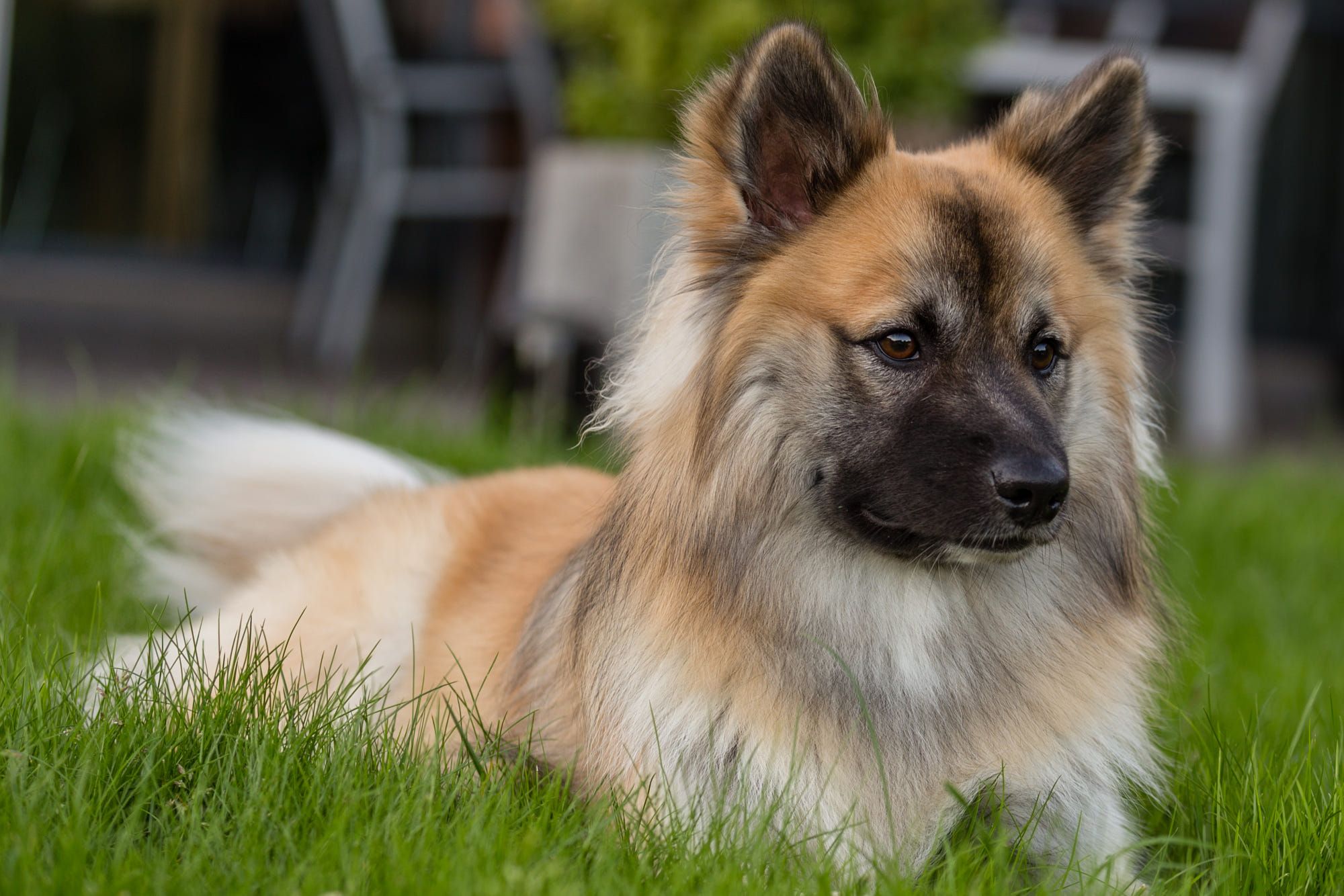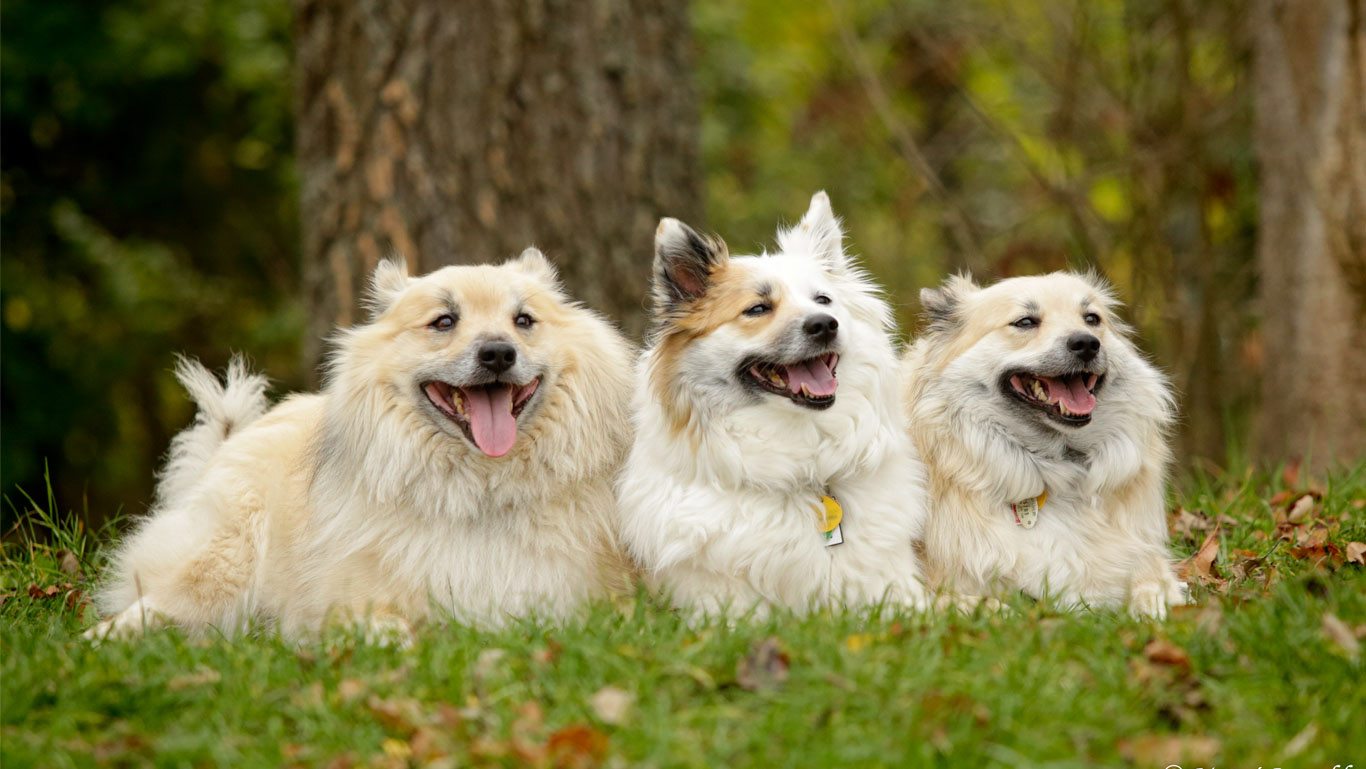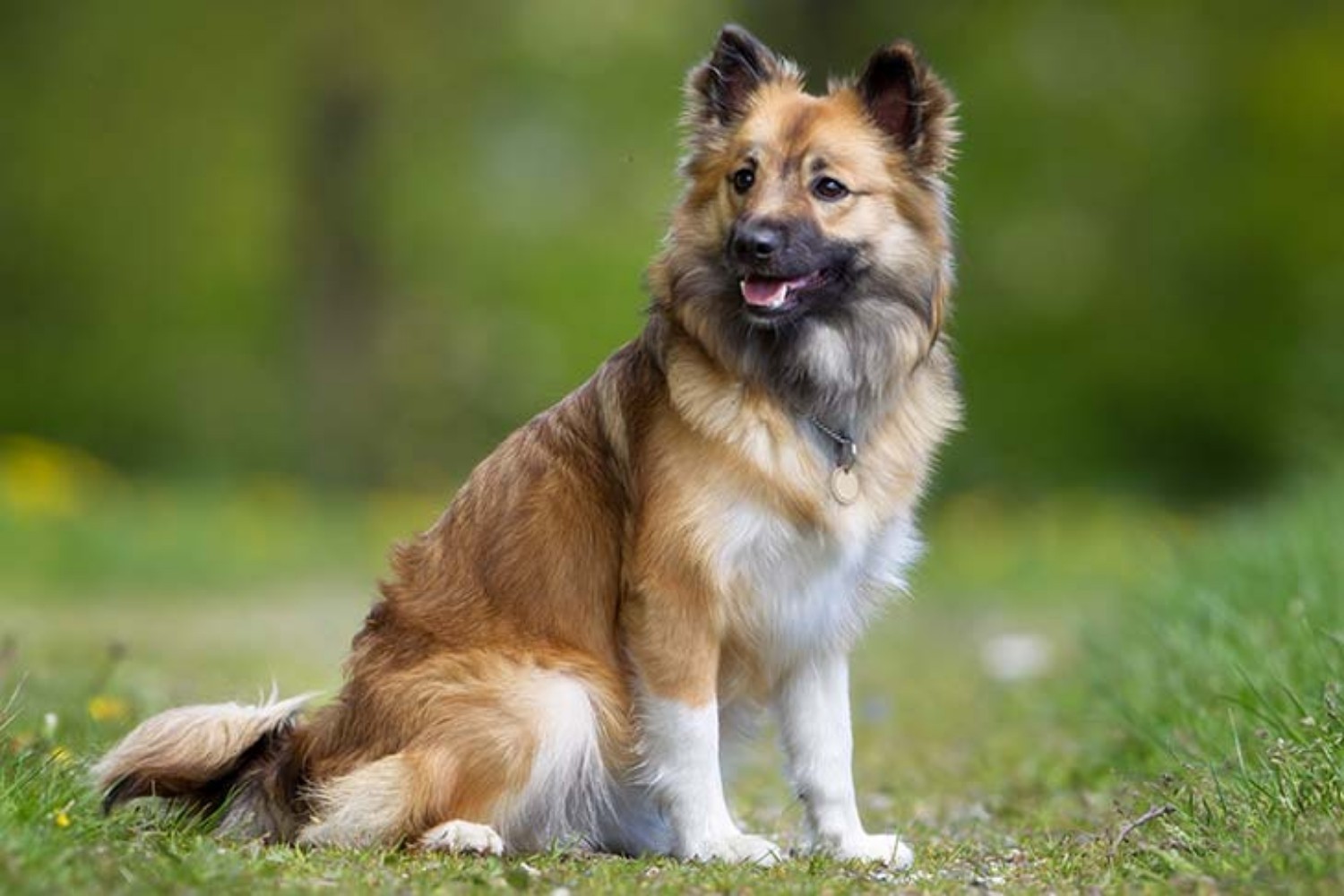
The Icelandic Sheepdog is Iceland’s only native dog breed, believed to have been brought to the island by Viking settlers over 1,000 years ago. These dogs were developed to help herd livestock, especially sheep and horses, across Iceland’s rugged terrain and harsh weather conditions.
Highly adaptable and resourceful, the Icelandic Sheepdog played a vital role in Icelandic agriculture for centuries. At one point, the breed faced extinction due to disease and food shortages, but dedicated breeding efforts in the 20th century—especially in the 1960s—helped bring it back from the brink. It is now a beloved national symbol of Iceland and was recognized by the American Kennel Club (AKC) in 2010 in the Herding Group.
While still relatively rare outside of Iceland and Scandinavia, the Icelandic Sheepdog is growing in popularity among those seeking a cheerful, intelligent, and active family companion. Its fox-like expression, fluffy coat, and friendly nature make it an appealing breed for those who love Nordic dogs and herders alike.
It excels in herding trials, agility, obedience, and as a therapy dog, showing its versatility beyond the farm.
The Icelandic Sheepdog is a small-to-medium spitz-type herding dog, known for its upright ears, curled tail, and vibrant expression.
• Coat: Thick, double coat that comes in two types:
o Short-haired: Slightly denser and stiffer.
o Long-haired: Softer and more flowing.
• Color:
o Common combinations include fawn, chocolate, black, and gray, always with white markings. Some have facial masks or saddles.
• Size:
o Height: 16.5–18 inches (42–46 cm)
o Weight: 20–30 lbs (9–14 kg)
• Head & Expression: Fox-like with a gentle, intelligent gaze and a slightly arched skull.
• Ears: Triangular, erect, and very expressive—move with the dog’s mood.
• Tail: Plumed and curled over the back, typical of spitz breeds.
• Body: Compact, strong, and agile—built for endurance and navigating uneven terrain.
This breed is known for its cheerful, affectionate, and alert personality, with an innate desire to work and play.
• Friendly and Social: Loves people, children, and other animals—rarely aggressive.
• Alert and Vocal: Naturally watchful and quick to bark at new sights or sounds—an excellent alarm dog.
• Playful and Energetic: Enjoys games, hikes, and interactive activities.
• Intelligent and Trainable: Quick learner, though can be a little independent at times.
• Sensitive and Devoted: Strongly attached to its family—thrives on attention and involvement.

Perfect for those who want a happy, lively companion that’s both hardworking and affectionate.
• Ideal Family Dog: Excellent with kids and pets—gentle and patient.
• Moderate Size: Manageable indoors, while still athletic outside.
• Adaptable: Does well in urban, suburban, or rural environments with proper exercise.
• Great for Dog Sports: Agile and eager to please—excels in herding, agility, and rally.
• Charming Personality: Enthusiastic and expressive—a real people-pleaser.
This breed needs mental engagement, physical activity, and regular grooming.
• Training:
o Start early—responds well to positive, rewards-based methods.
o Keep training sessions fun and varied to hold interest.
• Exercise:
o Needs at least an hour of daily activity—walks, playtime, and mental games.
o Loves outdoor adventures and herding-type challenges.
• Grooming:
o Brush 2–3 times per week to manage shedding and prevent mats.
o More frequent brushing during seasonal shedding (spring and fall).
• Nutrition:
o High-quality diet suited to active medium-sized breeds.
o Monitor weight—they can easily gain extra pounds if under-exercised.
• Companionship:
o Thrives with human interaction—not suited for long hours alone.

The Icelandic Sheepdog is generally healthy and long-lived, with an average lifespan of 12–16 years. Health issues to be aware of include:
• Hip Dysplasia
• Patellar Luxation
• Cataracts and other eye disorders
• Allergies or skin sensitivities
• Epilepsy (in some lines)
Reputable breeders conduct health screenings to ensure sound breeding lines.
Compared to the Finnish Spitz, the Icelandic Sheepdog is friendlier and more trainable. It's less aloof than the Shiba Inu and more social than the Norwegian Elkhound, while sharing a similar coat and herding instinct. It's one of the most biddable and family-friendly Nordic breeds.
If you’re looking for a devoted, cheerful dog with energy and heart, the Icelandic Sheepdog is a fantastic match. Ideal for families, active individuals, and homes with other pets, it offers companionship, watchdog instincts, and fun in one fluffy package.
Not well-suited for sedentary homes or owners who can’t manage frequent barking or moderate grooming.
United Pet Club connects you with trusted breeders, adoption avenues, and expert advice to help you bring home a healthy, happy Icelandic Sheepdog. With the right care and love, this smiling Nordic herder will become a treasured part of your family.